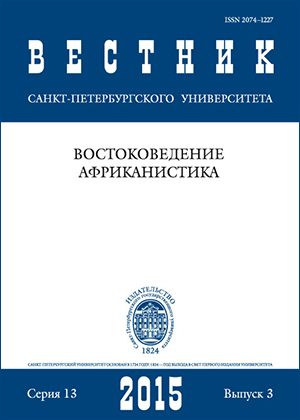Indo-Japanese political relations in the first years after the end of the Second World War
Abstract
This article presents a description and analysis of historical events, which played an important role in the restoration of friendly relations between Japan and India. During World War II, despite the fact that Japan and India were in a state of war, they did not conduct long warfare against each other. The main part of the article is devoted to the studying of events in the first years after the war ended. The International Military Tribunal for the Far East and the San Francisco Peace Conference are described more precisely. India, having received the status of an independent republic, was concerned about the further development of Japan, as well as its position after the signing of the Peace Treaty. This is due to the fact that India has seen in Japan of its natural potential partner in the Asian region. Therefore, the Indian government, though it refused to take part in the conference in San Francisco, insisted on ending the state of war and the signing of a separate peace treaty with Japan. The Treaty was signed in June 1952, which marked the beginning of the history of bilateral cooperation in the postwar period.
Keywords:
the Second World War, Japan, India, occupation of Japan, policy of non-alignment, Jawaharlal Nehru, Yoshida Shigeru, the International Military Tribunal for the Far East, Radhabinod Pal, the Peace Treaty of San Francisco, the normalization of the Indo-Japanese relations, the Treaty of Peace between India and Japan
Downloads
References
References
Downloads
Published
How to Cite
Issue
Section
License
Articles of "Vestnik of Saint Petersburg University. Asian and African Studies" are open access distributed under the terms of the License Agreement with Saint Petersburg State University, which permits to the authors unrestricted distribution and self-archiving free of charge.





